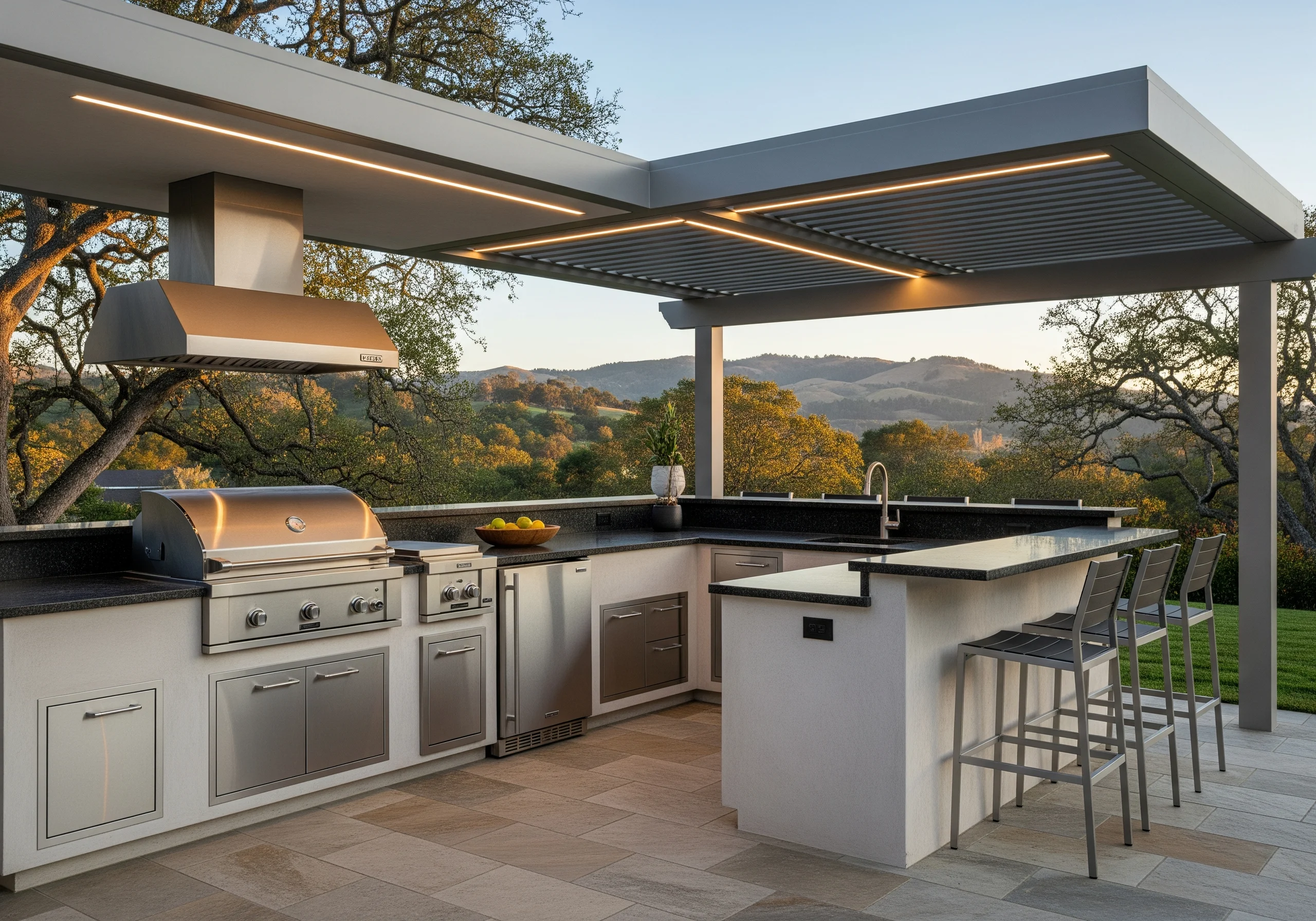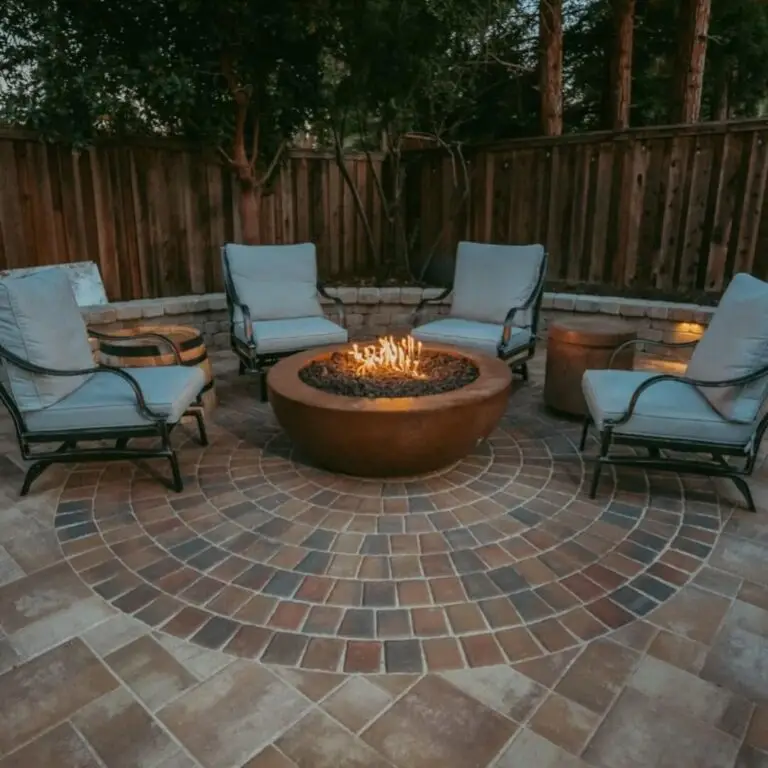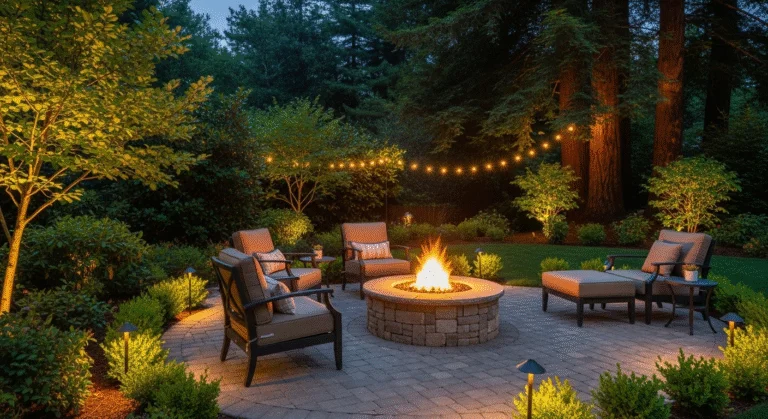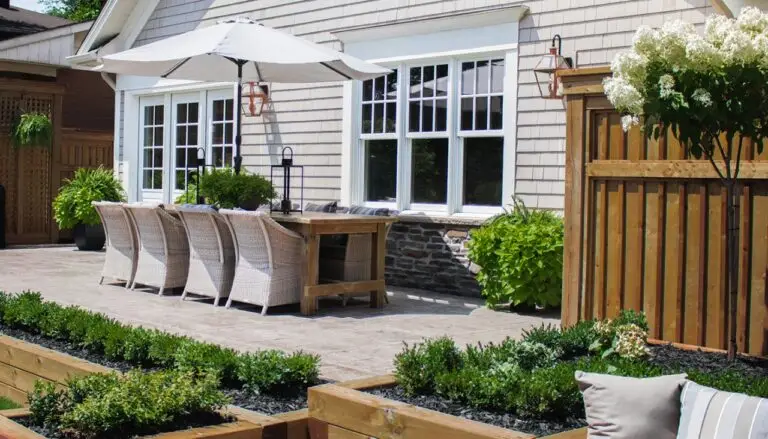Outdoor Kitchen Design Bay Area: 12 Critical Mistakes Pros Avoid

Are you planning an outdoor kitchen design Bay Area project but worried about making expensive mistakes that could cost thousands in corrections? Statistics show that 68% of Bay Area homeowners who attempt DIY outdoor kitchen installations encounter major design flaws requiring professional intervention, with average correction costs ranging from $8,000 to $25,000.
The unique challenges of outdoor kitchen design Bay Area projects include navigating complex local building codes, managing microclimates from San Francisco to San Jose, dealing with seismic requirements, and selecting materials that withstand coastal weather conditions. Many homeowners discover critical design errors only after construction begins, leading to project delays, budget overruns, and compromised functionality.
This comprehensive guide reveals 12 critical mistakes that professional outdoor kitchen design Bay Area contractors consistently avoid, saving clients thousands while ensuring optimal performance and compliance. You’ll learn insider strategies for layout optimization, material selection, utility planning, and code compliance that separate amateur attempts from professional installations.
BBP Pavers, serving discerning Bay Area homeowners for over a decade, shares proven design principles that have prevented costly mistakes in hundreds of outdoor kitchen projects throughout Silicon Valley, East Bay, and Peninsula communities.
Continue reading to discover how avoiding these common outdoor kitchen design Bay Area mistakes protects your investment while creating the perfect outdoor entertaining space.
Ready to avoid costly design mistakes? Contact BBP Pavers at (844) 497-3321 for expert outdoor kitchen design consultation.
Understanding Outdoor Kitchen Design Bay Area Requirements
Successful outdoor kitchen design Bay Area projects require comprehensive understanding of local regulations, climate considerations, and regional preferences that distinguish Bay Area installations from other markets nationwide.
Local Building Code Compliance
Bay Area municipalities maintain strict building codes for outdoor kitchen installations requiring permits, inspections, and professional oversight for electrical, plumbing, and gas connections. Each jurisdiction from San Francisco to Santa Clara County has specific requirements affecting design decisions and construction methods.
Outdoor kitchen design Bay Area projects must comply with California seismic standards, fire safety regulations, and environmental protection requirements that significantly impact foundation design, utility routing, and material specifications. Professional contractors understand these complexities ensuring code compliance from initial design through final inspection.
Setback requirements, height restrictions, and neighbor notification procedures vary significantly across Bay Area communities requiring local expertise to navigate approval processes efficiently. Improper permitting can result in project delays, fines, and mandatory reconstruction costing thousands in additional expenses.
Climate and Environmental Factors
Bay Area microclimates create unique challenges for outdoor kitchen design requiring materials and layouts adapted to specific environmental conditions. Coastal fog, temperature variations, and seasonal wind patterns significantly impact appliance selection, ventilation requirements, and structural considerations.
Outdoor kitchen design Bay Area installations must withstand salt air corrosion near coastal areas, temperature fluctuations exceeding 40 degrees between day and night, and seasonal rainfall averaging 20+ inches annually. Material selection becomes critical for long-term performance and maintenance requirements.
Wind patterns, sun exposure, and privacy considerations vary dramatically between Bay Area locations requiring site-specific design approaches. Professional assessment identifies optimal orientation, shelter requirements, and integration with existing landscape elements for maximum functionality and enjoyment.
Regional Design Preferences
Bay Area homeowners typically prefer contemporary outdoor kitchen designs emphasizing clean lines, premium materials, and seamless indoor-outdoor integration reflecting regional architectural styles and lifestyle preferences. Understanding these preferences ensures designs that enhance property values and market appeal.
Outdoor kitchen design Bay Area trends favor sustainable materials, energy-efficient appliances, and smart technology integration aligning with regional environmental consciousness and tech-forward culture. Professional designers incorporate these elements while maintaining functionality and durability.
Entertainment-focused layouts accommodating large gatherings reflect Bay Area social culture requiring careful space planning, traffic flow optimization, and integration with patio areas and outdoor lighting systems.
Mistake #1: Inadequate Space Planning and Layout Design
Poor space planning represents the most common and costly outdoor kitchen design Bay Area mistake, affecting functionality, safety, and long-term satisfaction while requiring expensive modifications to correct.
Work Triangle Optimization
Professional outdoor kitchen design Bay Area layouts prioritize efficient work triangles connecting cooking, preparation, and cleanup areas within optimal distances. The ideal triangle maintains 12-26 feet total perimeter preventing excessive walking while avoiding cramped conditions that compromise safety and efficiency.
Many homeowners underestimate space requirements for outdoor cooking workflows resulting in layouts that force awkward movements, create bottlenecks during entertaining, and reduce cooking efficiency. Professional designers analyze intended use patterns ensuring optimal spacing for multiple users and various cooking activities.
Outdoor kitchen design Bay Area projects must accommodate larger appliances, increased ventilation clearances, and weather protection requirements that expand space needs beyond indoor kitchen standards. Inadequate planning creates layouts that feel cramped despite significant investments in premium appliances and materials.
Traffic Flow and Circulation
Effective outdoor kitchen design Bay Area layouts manage traffic flow preventing conflicts between cooking activities and guest circulation during entertaining. Poor circulation planning creates safety hazards, reduces functionality, and diminishes the social aspects that make outdoor kitchens desirable.
Consider sight lines, conversation areas, and natural gathering spaces when planning outdoor kitchen layouts ensuring cooks can interact with guests while maintaining efficient workflows. Integration with fire pit areas and seating zones requires careful coordination preventing circulation conflicts.
Professional designers evaluate existing landscape features, property boundaries, and architectural elements ensuring outdoor kitchen placement enhances rather than disrupts overall outdoor living functionality. Poor placement can isolate outdoor kitchens reducing their utility and enjoyment value.
Storage and Counter Space Requirements
Outdoor kitchen design Bay Area installations require significantly more storage than homeowners typically anticipate including weatherproof cabinets for utensils, serving pieces, cleaning supplies, and seasonal items. Inadequate storage forces frequent trips indoors defeating the convenience benefits of outdoor cooking.
Counter space requirements exceed indoor standards due to larger serving pieces, multiple cooking activities, and entertaining needs requiring space for food preparation, plating, and buffet service. Professional layouts provide adequate work surfaces while maintaining efficient workflows and visual appeal.
Specialized storage needs for outdoor cooking including propane tanks, charcoal, wood chips, and weather protection covers require dedicated spaces integrated into overall design schemes. Poor storage planning creates cluttered appearances and reduces functionality significantly.
Mistake #2: Ignoring Utility Infrastructure and Placement
Utility planning mistakes in outdoor kitchen design Bay Area projects create expensive correction requirements while limiting appliance options and compromising safety standards throughout the installation.
Electrical System Requirements
Outdoor kitchen design Bay Area installations require dedicated electrical circuits, GFCI protection, and weatherproof components meeting strict California electrical codes. Inadequate electrical planning limits appliance options while creating safety hazards and code violations requiring expensive corrections.
Professional electrical design accommodates high-amperage appliances, adequate lighting systems, and convenience outlets while maintaining code compliance and safety standards. Many homeowners underestimate electrical requirements discovering limitations only after construction begins.
Consider future expansion needs when planning electrical systems ensuring adequate capacity for additional appliances, lighting upgrades, and technology integration. Upgrading electrical systems after construction costs significantly more than proper initial installation.
Gas Line Installation and Safety
Natural gas connections for outdoor kitchen design Bay Area projects require professional installation, proper sizing, and safety shutoffs meeting strict utility company and building code requirements. Improper gas installation creates serious safety hazards while limiting appliance performance and efficiency.
Gas line sizing must accommodate peak demand from multiple appliances operating simultaneously ensuring adequate pressure and flow for optimal performance. Undersized gas lines reduce appliance efficiency while creating safety concerns during peak usage periods.
Professional gas installation includes proper venting, leak detection systems, and emergency shutoffs ensuring safe operation while meeting insurance and warranty requirements. DIY gas work violates codes while creating liability issues and safety hazards.
Water and Drainage Considerations
Outdoor kitchen design Bay Area projects require water supply for sinks, ice makers, and cleanup activities plus drainage systems handling grease, food waste, and storm water runoff. Poor water planning creates maintenance problems while limiting functionality and creating environmental concerns.
Drainage systems must handle kitchen waste water plus storm water runoff preventing pooling, erosion, and environmental contamination. Professional drainage design integrates with existing systems while meeting environmental protection requirements.
Consider water pressure, temperature control, and freeze protection when planning outdoor plumbing systems ensuring reliable operation throughout Bay Area climate variations. Inadequate water systems reduce functionality while creating maintenance and reliability problems.
Professional utility planning ensures safety and functionality. BBP Pavers provides comprehensive outdoor kitchen services with expert utility coordination. Call (844) 497-3321.
Mistake #3: Poor Material Selection for Bay Area Climate
Material selection mistakes in outdoor kitchen design Bay Area projects lead to premature deterioration, increased maintenance costs, and compromised appearance requiring expensive replacements within years rather than decades.
Countertop Material Considerations
Bay Area outdoor kitchens require countertop materials withstanding temperature fluctuations, UV exposure, moisture, and seismic movement while maintaining appearance and functionality. Popular materials include granite, quartz, concrete, and stainless steel each offering specific advantages for outdoor applications.
Granite countertops provide durability and heat resistance ideal for outdoor cooking applications but require periodic sealing to prevent staining and moisture penetration. Professional installation ensures proper support and seismic resistance meeting Bay Area building requirements.
Quartz surfaces offer consistent appearance and low maintenance but may discolor under intense UV exposure requiring shade structures or protective treatments. Concrete countertops provide design flexibility and durability but require expert installation and finishing for optimal performance and appearance.
Cabinet and Storage Solutions
Outdoor kitchen design Bay Area cabinets must withstand moisture, temperature variations, and UV exposure while providing secure storage and attractive appearance. Marine-grade materials, stainless steel construction, and weatherproof finishes ensure long-term performance in challenging outdoor environments.
Stainless steel cabinets offer superior durability and weather resistance but require quality construction and proper ventilation preventing condensation and corrosion. Powder-coated aluminum provides lightweight durability with color options but requires quality finishes for longevity.
Weatherproof wood cabinets using teak, cedar, or treated lumber provide natural beauty but require regular maintenance and protective treatments. Professional installation ensures proper drainage, ventilation, and protection from moisture infiltration.
Flooring and Surface Materials
Outdoor kitchen flooring must provide slip resistance, durability, and attractive appearance while withstanding weather exposure and heavy use. Popular options include natural stone, paver systems, concrete, and composite materials each offering specific performance characteristics.
Natural stone flooring provides durability and natural beauty but requires proper sealing and maintenance preventing staining and weather damage. Travertine, granite, and slate offer different textures and appearances suitable for various design styles.
Paver systems offer design flexibility, easy maintenance, and replacement capabilities ideal for outdoor kitchen applications. Interlocking pavers accommodate ground movement while providing attractive, durable surfaces that complement overall landscape design.
Mistake #4: Inadequate Weather Protection and Shelter
Weather protection failures in outdoor kitchen design Bay Area projects limit usability, damage equipment, and reduce long-term satisfaction requiring expensive additions and modifications to achieve desired functionality.
Roof and Overhead Coverage
Outdoor kitchen design Bay Area installations require overhead protection from rain, sun, and wind ensuring year-round usability while protecting appliances and users from weather exposure. Roof structures must meet building codes while complementing architectural styles and landscape design.
Permanent roof structures provide maximum protection but require engineering, permits, and substantial construction investment. Options include gable roofs, shed roofs, and flat roofs each offering different aesthetic and functional characteristics suitable for various applications.
Retractable awnings and pergola systems offer flexible weather protection with lower initial costs but may provide limited protection during severe weather. Pergola installations can incorporate retractable covers combining permanent structure with flexible protection options.
Wind Protection Strategies
Bay Area wind patterns require strategic wind protection ensuring comfortable cooking and dining conditions while preventing equipment damage and safety hazards. Wind screens, landscape barriers, and architectural elements provide effective protection when properly designed and positioned.
Solid barriers provide maximum wind protection but may create uncomfortable downdrafts or block desirable views requiring careful design and positioning. Partial barriers and landscape screening offer wind reduction while maintaining openness and visual appeal.
Consider prevailing wind directions, seasonal variations, and microclimate effects when planning wind protection ensuring effective shelter without compromising outdoor kitchen functionality or aesthetic appeal. Professional assessment identifies optimal protection strategies for specific sites and conditions.
Drainage and Water Management
Effective drainage systems protect outdoor kitchen design Bay Area installations from water damage while preventing pooling, erosion, and structural problems. Comprehensive water management includes roof drainage, surface drainage, and subsurface systems handling various water sources.
Roof drainage must handle peak rainfall volumes directing water away from outdoor kitchen areas preventing flooding and equipment damage. Gutters, downspouts, and drainage systems require proper sizing and positioning ensuring effective water removal during storm events.
Surface drainage prevents water accumulation around outdoor kitchens protecting foundations, equipment, and user safety. Proper grading, drainage channels, and permeable surfaces manage storm water runoff while maintaining attractive appearances and functionality.
Mistake #5: Appliance Selection and Placement Errors
Appliance mistakes in outdoor kitchen design Bay Area projects waste money, compromise functionality, and create safety hazards while limiting cooking capabilities and long-term satisfaction with outdoor kitchen investments.
Grill Selection and Sizing
Outdoor kitchen design Bay Area grill selection must balance cooking capacity, fuel type, features, and budget while ensuring proper integration with overall kitchen layout and utility systems. Oversized grills waste space and money while undersized units limit cooking capabilities during entertaining.
Built-in grills offer seamless integration and professional appearance but require permanent installation and higher initial costs. Freestanding grills provide flexibility and lower costs but may not integrate well with custom outdoor kitchen designs.
Consider cooking frequency, typical group sizes, and preferred cooking methods when selecting grills ensuring adequate capacity without excessive size or cost. Professional consultation helps match grill capabilities with actual usage patterns and budget constraints.
Refrigeration and Ice Systems
Outdoor refrigeration requires specialized equipment designed for temperature variations, humidity, and ventilation requirements different from indoor applications. Standard indoor refrigerators fail quickly in outdoor environments requiring expensive replacements and repairs.
Outdoor-rated refrigerators, ice makers, and beverage centers provide reliable performance in challenging outdoor conditions but require proper ventilation, drainage, and electrical connections. Professional installation ensures optimal performance and warranty compliance.
Consider storage needs, entertaining patterns, and maintenance requirements when selecting refrigeration equipment ensuring adequate capacity while minimizing operating costs and maintenance demands. Energy-efficient models reduce operating costs while providing reliable performance.
Specialty Appliance Integration
Outdoor kitchen design Bay Area projects often incorporate specialty appliances including pizza ovens, smokers, side burners, and warming drawers requiring careful planning for utility connections, ventilation, and space allocation.
Pizza ovens require substantial structural support, proper ventilation, and fire-safe clearances significantly impacting outdoor kitchen layout and construction costs. Professional installation ensures safety and optimal performance while meeting building code requirements.
Smokers, rotisseries, and specialty cooking equipment require dedicated space, utility connections, and ventilation systems integrated into overall outdoor kitchen design. Poor planning creates crowded layouts and compromised functionality.
Mistake #6: Ventilation and Safety Oversights
Ventilation failures in outdoor kitchen design Bay Area projects create safety hazards, code violations, and performance problems requiring expensive corrections while compromising user safety and equipment longevity.
Proper Ventilation Requirements
Outdoor kitchen ventilation must handle cooking smoke, grease, and combustion products while meeting building codes and safety standards. Inadequate ventilation creates fire hazards, air quality problems, and neighbor complaints requiring expensive system upgrades.
Range hoods for outdoor applications require weather-resistant construction, adequate CFM ratings, and proper ductwork ensuring effective smoke and grease removal. Professional sizing and installation ensure optimal performance while meeting code requirements.
Natural ventilation through proper spacing and airflow design can supplement mechanical systems reducing costs while maintaining safety and performance. Professional assessment determines optimal ventilation strategies for specific installations and local conditions.
Fire Safety and Prevention
Fire safety planning for outdoor kitchen design Bay Area installations includes proper clearances, fire suppression systems, and emergency procedures ensuring user safety while protecting property investments. Building codes specify minimum clearances and safety requirements for various appliances and installations.
Fire suppression systems including automatic extinguishers and manual systems provide protection for high-risk installations while meeting insurance and code requirements. Professional fire safety assessment identifies risks and appropriate protection measures.
Emergency planning includes escape routes, utility shutoffs, and communication systems ensuring rapid response to fire emergencies. Proper planning and equipment placement can prevent minor incidents from becoming major disasters.
Gas Safety and Leak Detection
Gas safety systems for outdoor kitchen design Bay Area projects include proper installation, leak detection, and emergency shutoffs ensuring safe operation while meeting utility company and building code requirements.
Professional gas leak detection during installation and periodic testing ensures system integrity while identifying potential problems before they create safety hazards. Gas detection systems provide continuous monitoring for enhanced safety.
Emergency shutoff procedures and equipment location ensure rapid response to gas leaks or other emergencies. Proper training and clear procedures help users respond appropriately to various emergency situations.
Safety first in outdoor kitchen design. BBP Pavers ensures code-compliant installations with comprehensive safety systems. Contact us at (844) 497-3321 for expert consultation.
Mistake #7: Budget Planning and Cost Management Failures
Budget mistakes in outdoor kitchen design Bay Area projects lead to incomplete installations, compromised quality, and financial stress while failing to achieve desired functionality and aesthetic goals.
Hidden Cost Identification
Outdoor kitchen design Bay Area projects involve numerous hidden costs including permits, utility connections, site preparation, and finishing work often overlooked in initial budgeting. Professional cost estimation identifies all project components preventing budget surprises and project delays.
Permit costs, inspection fees, and utility connection charges can add thousands to project budgets requiring early identification and planning. Site preparation including excavation, grading, and utility trenching varies significantly based on existing conditions and accessibility.
Finishing costs including landscaping integration, outdoor lighting, and decorative elements significantly impact total project investment requiring comprehensive planning and realistic budgeting for complete installations.
Value Engineering Strategies
Professional value engineering balances desired features with budget constraints ensuring maximum value while achieving essential functionality and aesthetic goals. Strategic material selection, phased construction, and feature prioritization optimize budget allocation.
Phased construction allows homeowners to spread costs over time while ensuring proper infrastructure for future additions. Initial phases can include essential elements with luxury features added later as budgets allow.
Material selection significantly impacts project costs with strategic choices providing desired appearance and performance at various price points. Professional guidance helps identify cost-effective alternatives without compromising quality or longevity.
Financing and Payment Planning
Outdoor kitchen design Bay Area projects represent significant investments requiring careful financial planning and appropriate financing strategies. Financing options help homeowners achieve desired outdoor kitchens while managing cash flow and budget constraints.
Home equity loans, personal loans, and contractor financing provide various options for funding outdoor kitchen projects with different terms, rates, and qualification requirements. Professional consultation helps identify optimal financing strategies for individual situations.
Payment scheduling aligned with project milestones protects homeowners while ensuring contractor cash flow for timely project completion. Clear payment terms and milestone definitions prevent disputes while maintaining project momentum.
Mistake #8: Neglecting Integration with Existing Landscape
Integration failures in outdoor kitchen design Bay Area projects create disconnected outdoor spaces, compromise functionality, and reduce property values while missing opportunities for cohesive outdoor living environments.
Landscape Design Coordination
Successful outdoor kitchen design Bay Area installations integrate seamlessly with existing landscape elements including mature trees, slopes, views, and architectural features. Poor integration creates awkward transitions and reduces overall outdoor space functionality.
Professional landscape assessment identifies opportunities and constraints affecting outdoor kitchen placement, design, and construction methods. Existing irrigation, drainage, and utility systems require coordination preventing conflicts and additional costs.
Plant selection and landscape modifications should complement outdoor kitchen design while providing privacy, wind protection, and aesthetic enhancement. Integration with artificial turf areas and hardscape elements creates cohesive outdoor environments.
Hardscape Integration
Outdoor kitchen design Bay Area projects should integrate with existing hardscape elements including patios, walkways, and retaining walls creating unified outdoor living spaces with consistent materials and design themes.
Material coordination between outdoor kitchens and existing hardscape prevents visual conflicts while creating sophisticated outdoor environments that enhance property values. Professional design ensures smooth transitions and complementary aesthetics.
Elevation changes, drainage patterns, and structural requirements must coordinate with existing hardscape preventing conflicts while creating functional outdoor spaces. Poor coordination creates expensive modification requirements and compromised functionality.
Utility System Integration
Existing utility systems including electrical, plumbing, and gas services require careful integration with outdoor kitchen requirements ensuring adequate capacity while minimizing installation costs and disruption to existing systems.
Professional utility assessment identifies existing capacity, upgrade requirements, and optimal connection points minimizing installation costs while ensuring reliable service. Coordination with utility companies ensures proper procedures and code compliance.
Landscape protection during utility installation prevents damage to existing plants, irrigation systems, and hardscape elements. Professional installation techniques minimize disruption while ensuring proper system function and longevity.
Mistake #9: Inadequate Lighting Design and Electrical Planning
Lighting failures in outdoor kitchen design Bay Area projects compromise safety, functionality, and ambiance while limiting usability during evening hours when outdoor entertaining is most enjoyable.
Task Lighting Requirements
Outdoor kitchen design Bay Area installations require adequate task lighting for food preparation, cooking, and cleanup activities ensuring safety and functionality during evening use. Inadequate lighting creates safety hazards while reducing cooking efficiency and enjoyment.
Under-cabinet lighting, pendant fixtures, and recessed lighting provide focused illumination for work surfaces while minimizing glare and shadows. Professional lighting design ensures optimal light levels while maintaining attractive ambiance for entertaining.
Lighting controls including dimmers, timers, and smart systems provide flexibility for various activities and moods while reducing energy consumption. Professional electrical planning ensures adequate circuits and control options for comprehensive lighting systems.
Ambient and Accent Lighting
Ambient lighting creates comfortable outdoor environments for entertaining while accent lighting highlights architectural features and landscape elements. Professional lighting design balances functional and aesthetic requirements creating inviting outdoor spaces.
String lights, lanterns, and decorative fixtures provide ambient lighting while creating festive atmospheres for outdoor entertaining. Integration with fire pit areas and seating zones enhances overall outdoor living experiences.
Landscape lighting integration extends outdoor kitchen functionality while highlighting garden features and providing security lighting. Professional design coordinates various lighting systems creating cohesive outdoor environments with multiple lighting zones and control options.
Safety and Security Lighting
Safety lighting ensures secure navigation around outdoor kitchens while security lighting protects property and provides peace of mind. Motion sensors, pathway lighting, and emergency lighting enhance safety while deterring unwanted activity.
Step lighting, pathway illumination, and hazard lighting prevent accidents while providing attractive wayfinding for guests. Professional installation ensures proper placement and adequate illumination levels for various outdoor activities and conditions.
Emergency lighting and backup power systems ensure continued operation during power outages while providing safety and security. Battery backup systems and generator connections maintain essential lighting during emergencies.
Mistake #10: Seasonal Considerations and Year-Round Usability
Seasonal planning failures in outdoor kitchen design Bay Area projects limit usability, increase maintenance requirements, and reduce return on investment while missing opportunities for year-round outdoor living enjoyment.
Weather Protection Systems
Bay Area outdoor kitchens require weather protection systems accommodating seasonal variations including rain, wind, temperature changes, and occasional frost. Comprehensive protection ensures year-round usability while protecting equipment investments.
Retractable covers, removable panels, and seasonal enclosures provide flexible weather protection adapting to changing conditions while maintaining open-air cooking experiences during favorable weather. Professional systems ensure durability and ease of operation.
Heating systems including patio heaters, fire features, and radiant heating extend outdoor kitchen usability during cooler months while creating comfortable environments for entertaining. Integration with overall design ensures aesthetic appeal and functional effectiveness.
Maintenance and Winterization
Seasonal maintenance requirements for outdoor kitchen design Bay Area installations include equipment protection, system winterization, and preventive care ensuring optimal performance and longevity. Professional maintenance programs provide comprehensive care while protecting warranty coverage.
Equipment covers, drain procedures, and system shutdowns protect outdoor kitchen components during severe weather while preventing damage from temperature extremes and moisture exposure. Proper winterization prevents expensive repairs and extends equipment life.
Cleaning schedules, inspection procedures, and preventive maintenance ensure optimal performance while identifying potential problems before they require expensive repairs. Professional maintenance services provide expert care while ensuring warranty compliance.
Seasonal Usage Optimization
Outdoor kitchen design Bay Area layouts should accommodate seasonal usage patterns including summer entertaining, holiday gatherings, and year-round cooking activities. Flexible design elements adapt to changing needs while maximizing investment returns.
Seasonal storage solutions accommodate changing equipment needs, seasonal decorations, and weather protection equipment while maintaining organized, attractive outdoor spaces. Built-in storage systems provide convenient access while protecting valuable items.
Activity planning and space allocation should consider seasonal variations in usage patterns, group sizes, and entertainment styles ensuring outdoor kitchens meet diverse needs throughout the year while providing maximum enjoyment and value.
BBP Pavers: Your Outdoor Kitchen Design Bay Area Experts
BBP Pavers leads outdoor kitchen design Bay Area services with comprehensive expertise, innovative solutions, and unmatched customer satisfaction serving discerning homeowners throughout the San Francisco Bay Area region.
Why Choose BBP Pavers for Outdoor Kitchen Design
Regional Expertise: Serving Bay Area communities including Concord, Walnut Creek, Fremont, and Palo Alto, BBP Pavers understands local codes, climate challenges, and design preferences.
Comprehensive Services: Beyond outdoor kitchens, BBP Pavers provides integrated solutions including patio pavers, fire pits, pergolas, and outdoor lighting creating complete outdoor living environments.
Quality Assurance: Comprehensive warranty protection and flexible financing options make professional outdoor kitchen design accessible while protecting your investment with guaranteed performance.
Customer Success Stories
“BBP Pavers transformed our Walnut Creek backyard with an incredible outdoor kitchen that’s become our family’s favorite gathering space. Their attention to detail and professional expertise exceeded our expectations.” – Jennifer M., Walnut Creek
“The integrated design combining our outdoor kitchen with patio pavers and fire pit created the perfect entertaining space. BBP Pavers managed every detail flawlessly from permits to final inspection.” – Michael R., Los Altos
“Professional service from consultation through completion. BBP Pavers’ outdoor kitchen design perfectly captures Bay Area indoor-outdoor living while handling our challenging hillside site beautifully.” – Sarah L., Lafayette
Service Excellence and Availability
BBP Pavers provides outdoor kitchen design Bay Area services throughout the region with consistent quality standards, professional expertise, and customer service excellence that has earned our reputation as the Bay Area’s premier outdoor living contractor.
Contact Information:
- Address: 4918 Clayton Rd, Concord, CA 94521
- Phone: (844) 497-3321
- Email: bbppavers@gmail.com
- Office Hours: Monday-Friday 9 AM-5 PM, Saturday 9 AM-2 PM
Service Areas: Concord, Walnut Creek, Lafayette, Fremont, Los Altos, Palo Alto, and throughout the Bay Area.
Frequently Asked Questions
What permits are required for outdoor kitchen design Bay Area projects?
Most outdoor kitchen design Bay Area installations require building permits, electrical permits, and gas permits depending on project scope and local jurisdiction requirements. Permit requirements vary between cities with some requiring architectural review for design approval. BBP Pavers handles all permit applications and inspections ensuring code compliance while streamlining the approval process for faster project completion.
How much does professional outdoor kitchen design Bay Area cost?
Professional outdoor kitchen design Bay Area projects typically range from $15,000-75,000 depending on size, appliances, materials, and complexity. Basic installations start around $15,000 while luxury kitchens with premium appliances and custom features can exceed $75,000. BBP Pavers provides detailed estimates with transparent pricing and financing options making professional outdoor kitchens accessible to various budgets.
What materials work best for Bay Area outdoor kitchens?
Bay Area outdoor kitchen design requires materials withstanding temperature variations, moisture, and UV exposure including stainless steel, natural stone, marine-grade cabinetry, and weather-resistant finishes. Material selection depends on budget, maintenance preferences, and design style with professional guidance ensuring optimal choices for local conditions. BBP Pavers specifies proven materials with excellent performance records in Bay Area installations.
How long does outdoor kitchen design and construction take?
Outdoor kitchen design Bay Area projects typically require 2-4 weeks for design and permitting plus 3-8 weeks for construction depending on complexity, weather, and permit approval times. Custom features, utility work, and site challenges can extend timelines requiring realistic scheduling and professional project management. BBP Pavers provides detailed schedules with milestone tracking ensuring timely completion while maintaining quality standards.
Can outdoor kitchens be used year-round in the Bay Area?
Bay Area outdoor kitchens can provide year-round functionality with proper weather protection, heating systems, and seasonal maintenance. Mild Bay Area climate allows outdoor cooking throughout most of the year with weather protection extending usability during rain and wind. Professional design incorporates heating, shelter, and protection systems enabling comfortable year-round outdoor entertaining and cooking activities.
Conclusion

Avoiding these 12 critical outdoor kitchen design Bay Area mistakes protects your investment while ensuring optimal functionality, safety, and long-term satisfaction with your outdoor living space. Professional design and installation prevent costly corrections while creating outdoor kitchens that enhance property values and lifestyle enjoyment for decades.
BBP Pavers’ expertise serving Bay Area communities ensures your outdoor kitchen design incorporates proven strategies, quality materials, and professional craftsmanship that withstand local climate challenges while meeting strict building codes and safety requirements.
The investment in professional outdoor kitchen design Bay Area services provides exceptional returns through prevented mistakes, enhanced functionality, and increased property values. Quality outdoor kitchens properly designed and installed provide 20-30 years of reliable service while becoming the focal point for outdoor entertaining and family gatherings.
Professional consultation, comprehensive planning, and expert installation ensure your outdoor kitchen design Bay Area project achieves desired goals while avoiding expensive mistakes that compromise functionality, safety, and aesthetic appeal.
Transform your outdoor living space with professional outdoor kitchen design that avoids costly mistakes while creating the perfect environment for Bay Area indoor-outdoor lifestyle enjoyment.
Ready to create your dream outdoor kitchen without costly mistakes? Contact BBP Pavers today at (844) 497-3321 or visit our contact page for expert outdoor kitchen design consultation. Discover why Bay Area homeowners trust BBP Pavers for exceptional outdoor kitchen design that exceeds expectations while avoiding expensive pitfalls.
BBP Pavers Contact Information:
- Address: 4918 Clayton Rd, Concord, CA 94521
- Phone: (844) 497-3321
- Email: bbppavers@gmail.com
- Office Hours: Monday-Friday 9 AM-5 PM, Saturday 9 AM-2 PM
- Service Areas: Bay Area including Concord, Walnut Creek, Lafayette, Fremont, Los Altos, Palo Alto, and surrounding communities






